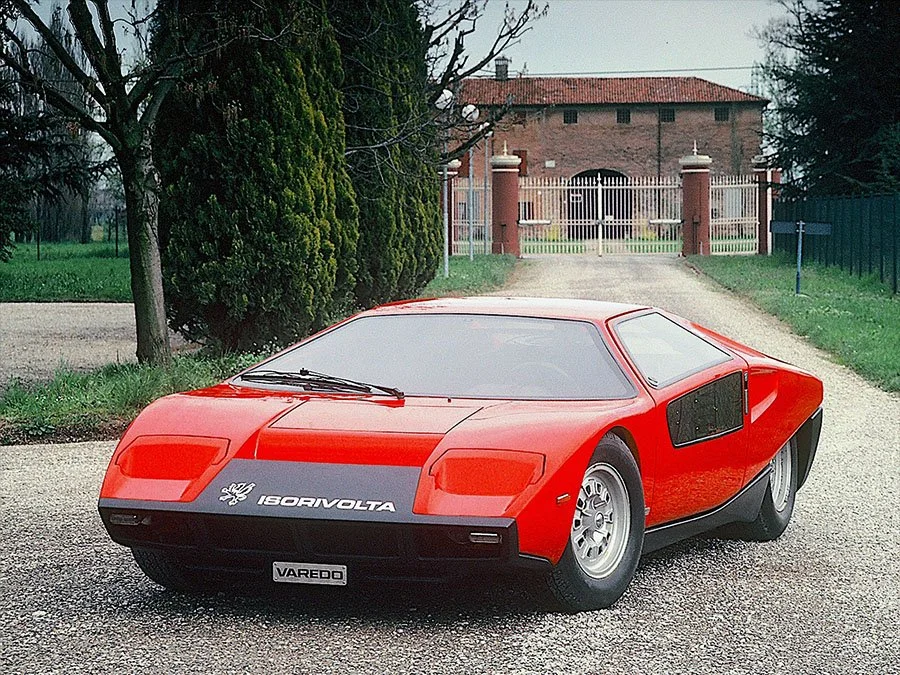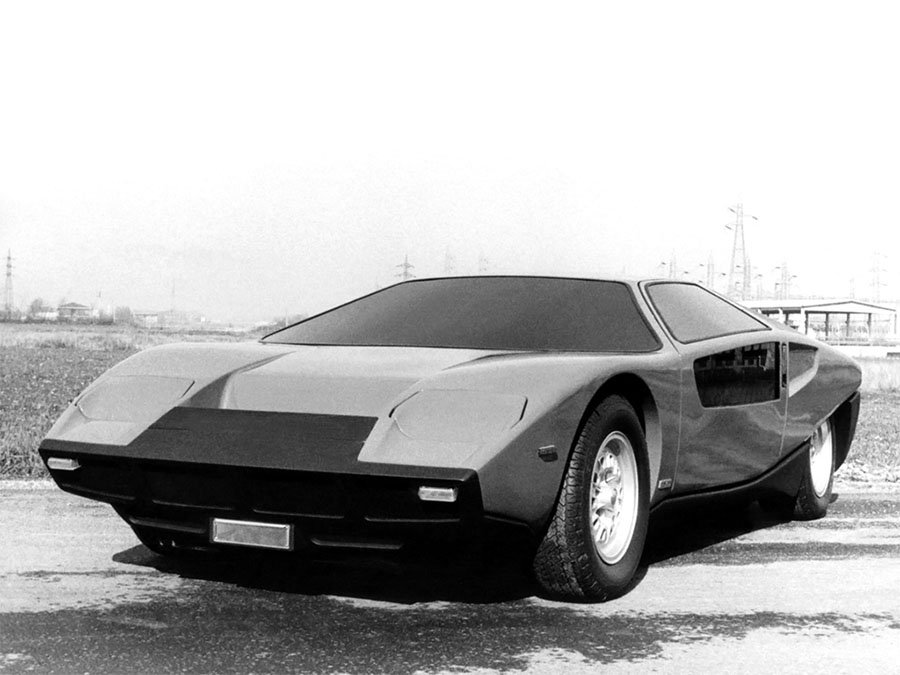Guide: Ambition Denied - a Historical & Technical Appraisal of the Iso Varedo
/BACKGROUND
Iso Rivolta was founded in 1962 by Milan industrialist, Renzo Rivolta.
Rivolta made his first fortune manufacturing refrigeration units. After World War 2 he expanded to motorcycle production and, in 1952, moved into the micro car market with his famous Isetta.
When sales of micro cars began to decline, Rivolta decided to enter the lucrative arena for high end performance cars. Iso’s first model was the Bizzarrini-designed, Bertone-styled and Chevrolet-powered IR300 / IR340 which was unveiled at the Turin Motor Show in October 1962.
To complement this handsome four-seat Coupe (production of which began in April 1963), Iso added the sportier Grifo line in 1965. The Grifo (another model designed by Giotto Bizzarrini) was available in Bertone-bodied A3/L or Drogo-bodied A3/C trim (L for Luxury and C for Competition).
However, Rivolta and Bizzarrini soon fell out and the A3/C was subsequently marketed as the Bizzarrini GT 5300 after the two men went their separate ways. The Bertone-styled A3/L remained part of Iso’s line up.
Unfortunately, on August 19th 1966, Renzo Rivolta unexpectedly died of a heart attack aged just 57. The company was taken over by his 25-year old son, Piero, who had graduated from university with a doctorate in mechanical engineering.
In 1967, Iso’s existing models were joined by the four-door Fidia.
In 1969, the IR300 / 340 was replaced by the Lele which was a like-for-like four-seat Coupe.
By the time the Lele broke cover, some of Iso’s rivals had moved into the burgeoning market for mid-engined machinery. Meanwhile, Iso continued to offer front-engined models in the traditional Gran Turismo mould.
It remained this way until early 1972 when Piero Rivolta commissioned a machine to take on the new generation of supercars with large displacement mid-mounted power units.
To design the new car, Giotto Bizzarrini was brought back on board; in the years since departing Iso, he had built cars under his own name and acted as a design consultant to a number of other firms. One of these companies had been the American Motors Corporation (AMC) who, in 1969, had recruited Bizzarrini to create a mid-engined prototype dubbed the AMX/3 in conjunction with Ital Design. Ultimately, AMC decided not to go ahead with the AMX/3 shortly after it was unveiled at the Geneva Motor Show in March 1970.
When Piero Rivolta came calling in early 1972. he wanted a mid-engined car by the end of the year. Bizzarrini thought the stillborn AMX/3 would be an ideal basis upon which to start work.
Although still without many of its interior fixtures and fittings, the Iso Varedo was unveiled at the Turin Motor Show in November 1972 (exactly ten years after the IR300 / 340 made its debut). The new car was named in honour of Piero Rivolta’s birth place around 15km north of Milan.
Iso hoped to produce between 30 and 50 of the fibreglass-bodied Varedos every year. It was expected to rival the De Tomaso Pantera as a cut price alternative to the more expensive machinery on offer from Ferrari, Lamborghini and Maserati.
The Varedo’s arrival marked the beginning of an ambitous period for Iso; 1973 would see the company team up with Marlboro and Frank Williams Racing Cars to run a two-car team in the Formula 1 World Championship.
CHASSIS
The Varedo used a lightened version of the AMX/3’s steel semi-monocoque chassis. Both cars shared an identical 2675mm wheelbase.
Suspension was via double wishbones with coil sprung tubular shocks (two per side at the rear). Anti-roll bars were installed at either end.
Disc brakes were fitted all round (ventilated at the front with solid inboard-mounted units at the rear).
The custom ten-hole cast alloy wheels were supplied by Campagnolo and shod with Pirelli Cinturato tyres.
ENGINE / TRANSMISSION
Like all Iso’s offerings thus far, the Varedo was powered by an off-the-shelf American big-block engine: in this case a 351 cubic-inch Ford Cleveland V8.
Iso had initially sourced their engines from Chevrolet, however, as a result of a new General Motors directive that demanded payment up front and larger bulk purchases, during 1972 Iso switched to Ford units to power the Grifo, Fidia and Lele.
The Cleveland V8 was an overhead valve pushrod V8 with a cast-iron block and heads. It featured a wet-sump lubrication system, two valves per cylinder, an 8.6:1 compression ratio and a single four-barrel Motorcraft carburettor.
Displacement was 5762cc thanks to a bore and stroke of 102mm and 89mm respectively.
In this configuration, peak output was 325bhp at 5800rpm and 337lb-ft at 3800rpm.
Transmission was through a ZF five-speed manual gearbox, single-plate clutch and limited-slip differential.
BODYWORK
Although all of Iso’s previous models had emerged from the studio of Carrozzeria Bertone, Piero Rivolta commissioned ex-Zagato stylist Ercole Spada to design the bodywork and interior for the Varedo.
During his time at Zagato between 1960 and 1969, Spada created an array of seminal designs to include the Aston Martin DB4 GTZ and the Alfa Romeo SZ, TZ and TZ2. Towards the end of the decade, he adopted a more avante garde approach that resulted in machinery like the Alfa Romeo Junior Z which ranked among the most forward-looking designs of its era.
Spada took a similar approach with the Varedo which was quite unlike anything else available at the time.
The bluntness of the Varedo’s nose was obscured by a satin black treatment also applied to the flanks, tail fascia and centre section of the nose below the large radiator cooling vent. Either side of this large cutaway were retractable pods that housed two circular lights per side.
To allow additional light into the cockpit (and further differentiate the Varedo from other wedge designs of the period), Spada added supplementary windows to the sides of the conventionally opening doors. Crude side protection bars were added inside to ensure adequate crashworthiness.
Engine covers opened up in dramatic Gullwing fashion.
More unusual details were found at the back of the car. High up on the rear flanks, Spada added indents that mirrored the twin window treatment. An elaborate bank of six recessed vents were housed on the engine covers so hot air could escape.
A Kamm tail fascia was short, blunt and largely devoid of any stylised features save for its two-tone paint finish. Carello lights of the type used by the Lamborghini Countach were installed, albeit without that car’s distinctive trapezoidal reflective shrouds.
All the Varedo’s body panels were fashioned from fibreglass and bonded to the chassis.
INTERIOR
In contrast to the unconventional exterior, the Varedo’s cockpit was comparatively restrained.
A simple full width dash featured a hex-top blister behind the three-spoke steering wheel. Here the large analogue rev counter and speedo were accommodated. Five additional read outs were added elsewhere: one between the speedo and tach, one off to the driver’s left and three in the centre of the dash.
Heavily bolstered bucket seats had fixed backs. They were trimmed with black leather bolsters and corduroy fabric centres. In between was a slim transmission tunnel and an open gate gear shift.
Most of the switchgear was housed on a simple central fascia.
The rest of the upholstery was a mix of leather, vinyl and carpet - all of it black.
WEIGHT / PERFORMANCE
Iso originally quoted a weight of 1200kg and top speed of circa 185mph.
0-62mph would likely have taken in the region of six seconds.
A more powerful Varedo with somewhere in the region of 400bhp (easily achievable with the right engine mods) could probably have topped 200mph and hit 0-62mph in around five seconds.
SUBSEQUENT HISTORY
In early 1973, the Iso group of companies was listed on the New York Stock Exchange and businessman Ivo Pera acquired sufficient shares to become the new owner.
During this period it was decided not to go ahead with Varedo production on cost grounds. Trading conditions for high end manufacturers were already difficult, but things worsened dramatically over the winter of 1973-1974 when Arab OPEC members announced an embargo on oil sales to the USA, UK, Canada, Japan and the Netherlands.
The embargo was in response to the USA's support for Israel in the Yom Kippur War where Egypt and Syria (with the support of other Arab nations) had begun a military campaign to regain Arab territories lost during the 1967 Six Day War (when Egypt, Syria and Jordan had been the aggressors).
Oil prices rose exponentially and remained at elevated levels for the next two years. Demand for gas guzzling cars dropped off a cliff.
In the midst of the crisis, Iso was placed into administration and the car building division never re-opened.
The solitary Varedo prototype was subsequently re-purchased by Renzo Rivolta and restored to its original configuration.
Text copyright: Supercar Nostalgia
Photo copyright: Iso



























